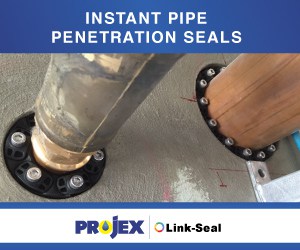Where there’s the installation of underground infrastructure, there’s usually an element of horizontal directional drilling involved, allowing councils and utilities to navigate features including rivers, creeks, roads and railroads without disturbing the natural environment. Here, HDD contractor Anthony Doherty provides a unique insight into the upcoming projects that will reinvigorate the sector after a quiet 12 months.
Horizontal directional drilling (HDD) is an innovative pipe installation technique which allows assets to be put in place without disrupting the surrounding environment. It’s one in a suite of installation technologies that fall under the banner of ‘trenchless’, meaning – as the name suggests – they do not require the digging of a trench for installation to take place.
HDD contractor Anthony Doherty, the director of AHD Trenchless, believes that after a quiet 12 months, the industry is starting to turn around.
“I think we’ve hit the bottom of the trough,” said Mr Doherty. “It has been quiet, but I can see greener pastures ahead. Whereas 12 months ago we were receiving very few enquiries, now we are receiving regular enquiries for a diverse range of projects.
“We’ve been speaking to utilities, consultant design engineers and pipeline construction contractors about projects across the country.
“Lots of these projects are linked to the suburban sprawl we’re seeing, particularly in Melbourne and Sydney. There’s a number of new communities and housing developments popping up on the fringe of Melbourne and Sydney, and they all need essential services connected.
“We’ve installed a number of gas distribution mains in Victoria, New South Wales, South Australia and Tasmania,” Mr Doherty said.
“We’ve also been involved in the construction of some large diameter water and wastewater pipelines in these new communities. The diameters are increasing beyond what I’ve traditionally seen for these types of projects, which in part is future-proofing the services that are going in now.
“With the population of both Melbourne and Sydney expected to increase considerably in the next 20 to 30 years, utilities are acting now to ensure the infrastructure they’re installing will be able to deal with the future population.”
In addition to these greenfield developments for new communities, Mr Doherty is also seeing a spike in work in built-up environments, including in suburbs close to CBDs, as increasing populations begin to put pressure on the infrastructure that services them – some with assets that are more than a century old.
“Again, increasing populations, and the increasing density of inner-city suburbs is putting pressure on the assets already in place, particularly the water and wastewater infrastructure. For example, in Melbourne, we’re seeing high-density apartment blocks being built in CBD-fringe suburbs such as Brunswick, Carlton and Parkville. The water and wastewater infrastructure in these suburbs was not designed for the number of residents that are currently there, let alone the influx of residents planned in the next 20 to 30 years.
“I’ve already seen a number of projects to upgrade and expand existing CBD infrastructure to cater to the growing population, and I believe this trend will continue in the years to come. HDD is particularly well suited to these types of jobs because of the minimal site footprint it offers – meaning residents and local businesses experience less disruption while these expansions and upgrades take place.
“Also in Melbourne, the State Government has committed to a program of removing over 50 level crossings in Melbourne. This too is creating a significant tranche of works for HDD contractors, as services are relocated as part of the program,” he said.
After a quiet period, it’s clear that the upcoming pipeline of work for the HDD sector is beginning to grow.
Watch this space.












